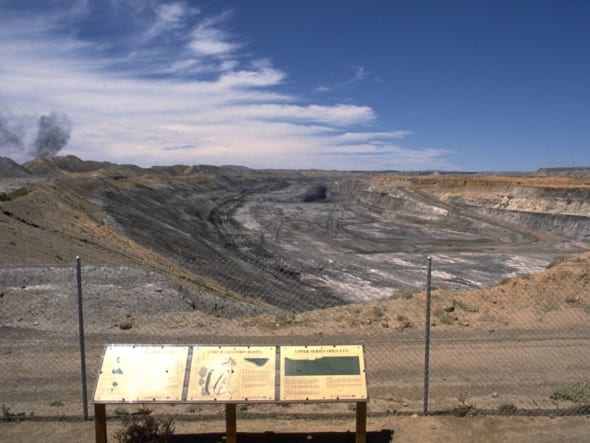In South Australia, it seems, they won’t let sleeping dogs lie. And they certainly don’t want to leave untapped brown coal reserves idle and unused.
While the South Australian government is pursuing its goal of transforming its state into a leader in the low carbon economy, a small listed mining company is hatching plans to exploit the closed Leigh Creek brown coal mine and “gasify” some of the remaining reserves, in the hope of building a “base load” gas plant of up to 600MW.

Leigh Creek Resources says it has signed a “heads of agreement” with the equipment manufacturer Shanghai Electric Power Generation Group to build the gas plant, and hopes to have a small, $16 million “demonstration” plant up and running by the end of this year. It also has a HoA with pipeline operator APA.
The Leigh Creek brown coal mine was closed last year as Alinta prepared for the shut-down of the 540MW Northern Power Station, the last coal-fired generator in the state. Northern is due to close in a few weeks.
A couple of obvious questions present themselves:
Why, if the owners of the Northern brown coal power station found the current wholesale price of electricity to be too low to support the plant, does the mining company believe that a gas-fired power station will be economic – particularly as gas is usually more expensive.
And how, in the light of a push to lower emissions, does a brown coal gasification plant meet emissions standards or reduction targets.
Gasification of brown coal might be slightly cleaner than coal shoveled straight into a boiler, but research conducted last year suggests it will have around the same emissions as the current Northern plant – one tonne of CO2 equivalent for every megawatt-hour. Unless the developers can find some way to sequester the CO2.
Still, Leigh Creek hopes to have its plant up by 2019. If it can’t supply the grid, then it hopes to find mining companies to buy the output, or sell the gas to large users such as AGL.
In presentations on its website, Leigh Creek skirts around the emissions issue. Instead, it says that “base load” generation will be needed because the state is dominated by wind energy and “wind energy is intermittent and destabilises transmission.”
There is no evidence that this is the case, but it is a common claim within fossil fuel circles.
In a recent statement, executive chairman Justyn Peters said: “We are very pleased to have developed our relationship to the point where we have now agreed to sign a HoA.
“The generation of base load power through a gas fired power station is important both to our company and to South Australia. We see this as a great first step in our development as an energy company.”
“The building, owning and operating of a power station ensures the success of our project, but also has the ability to provide cheaper, reliable power to industry and mines in South Australia.”
Meanwhile, the state is likely to cross the threshold of 50 per cent renewable energy later this year, and is looking forward to moving towards 100 per cent renewables, or as close as to that number as it can, in coming decades.
The Greens want that target to be reached by 2030, and even the Australian Energy Market Operator suggests the state could be producing more than its electricity demand from renewables by 2035.
Environmental groups want the state government and federal government to support a 110MW solar tower and storage facility to replace the coal generator near Port Augusta. Another company is proposing a 300MW hybrid solar and wind facility for the same area.










